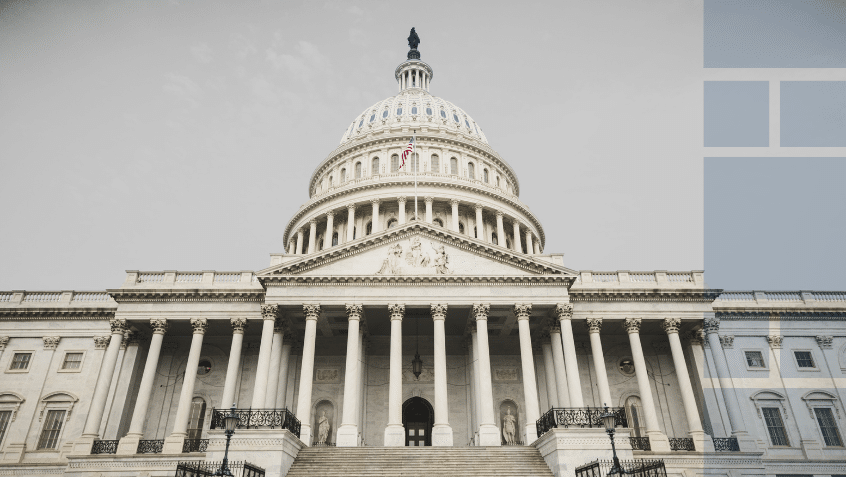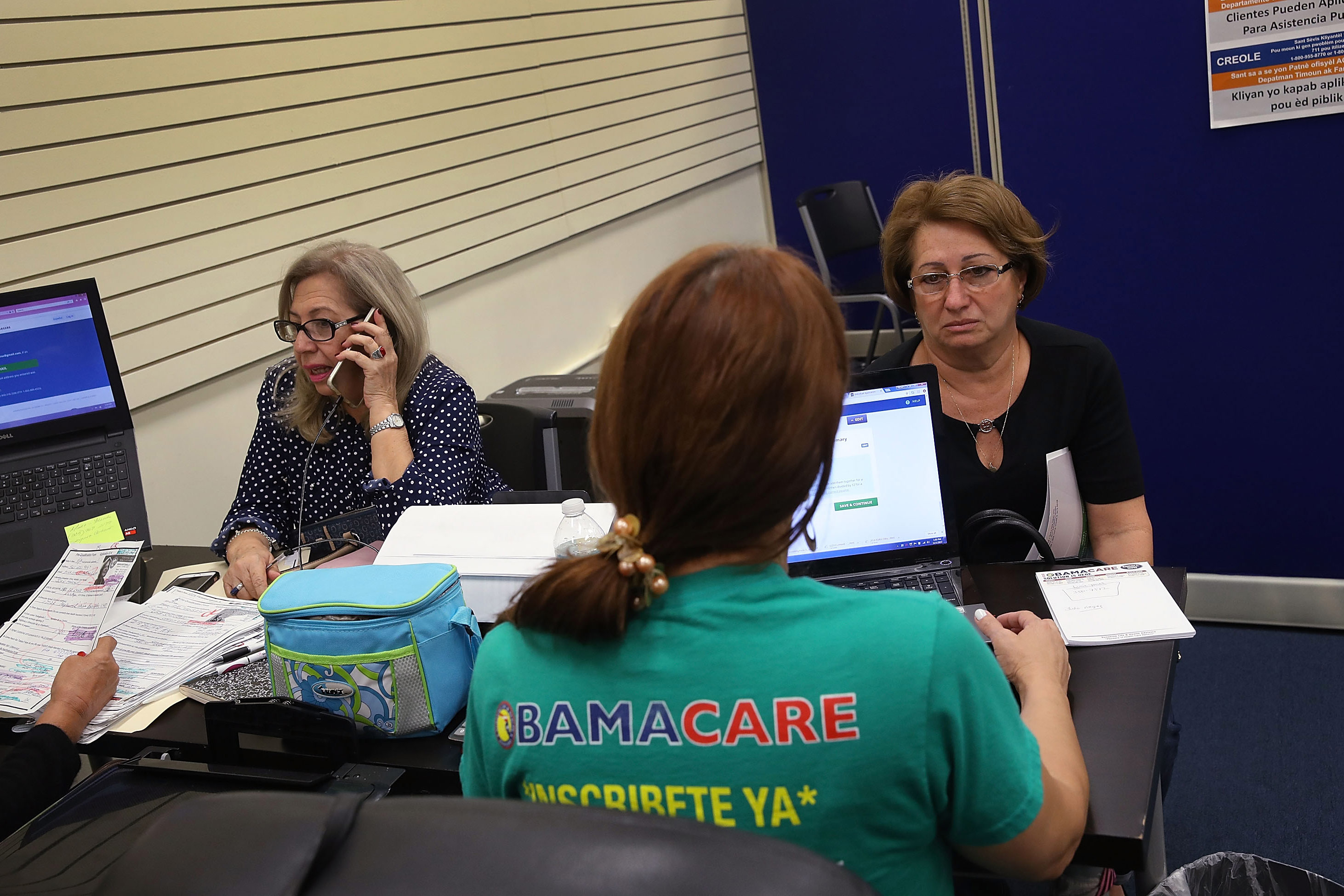What’s next for Marketplace health insurance subsidies after 2025?
After helping millions of individuals save significantly on premiums for five years, the Marketplace premium tax credit (“subsidy”) enhancements introduced by the American Rescue Plan (ARP) and extended by the Inflation Reduction Act (IRA) are due to sunset on Dec. 31, 2025. Without legislative action to extend the enhancements, major changes will take effect in 2026.
Here’s what the end of enhancements would mean for enrollees’ wallets:
Subsidies will disappear for people with household incomes over 400% of the federal poverty level (FPL).
Older enrollees in their 50s and 60s, and those in states with higher-than-average premiums – such as West Virginia, Wyoming, Vermont, Alaska, and Connecticut – will feel the financial impact of disappearing subsidies the most. (See our chart below for a detailed breakdown.)
For everyone else – enrollees with a household income up to and including 400% FPL – subsidies will be smaller than they would otherwise have been, resulting in higher after-subsidy premiums.
How have ARP’s subsidy enhancements affected eligibility for Marketplace premiums?
Enrollment in the health insurance Marketplaces hit an all-time high for plan year 2025, with more than 24.3 million people signing up for private Marketplace plans during the open enrollment period for 2025 coverage.
The record high enrollment, along with earlier record highs set in 2022, 2023, and 2024 was driven in part by the premium subsidy enhancements that were put in place by the American Rescue Plan and extended through 2025 by the Inflation Reduction Act (IRA).
As of early 2025, 93% of Marketplace enrollees were receiving advance premium tax credits (subsidies) that offset some or all of their monthly premiums. The federal government noted that as a result of the IRA’s extension of the ARP’s subsidy enhancements through 2025, four out of five people who enrolled through HealthCare.gov had access to plans with after-subsidy premiums of $10 or less per month in 2025,
How are the subsidies enhanced in 2025, and what will happen if those enhancements expire?
The subsidy enhancements – introduced to provide financial relief through the pandemic and rising inflation – have features to address two goals:
Eliminate the income cap for subsidies: Before 2021, subsidies were unavailable to households earning more than 400% of the federal poverty level. The enhancements removed this income cap, allowing higher-income households to qualify for premium assistance if their premiums would otherwise exceed 8.5% of their income.
Allow larger subsidies for lower-income households: As explained below, subsidies for enrollees up to and including 400% of FPL are larger than they were under the original ACA structure, because the ARP/IRA reduced the percentage of income that people have to pay for their coverage. This includes premium-free benchmark plans (second-lowest-cost Silver) for subsidy-eligible applicants with household income up to 150% of FPL.
But the ARP subsidy enhancements are scheduled to sunset at the end of 2025 unless they’re extended again by Congress. (Congress had not taken action to extend the subsidy enhancements as of mid-November 2025, and lawmakers were leaning toward waiting until December to even hold a vote on the issue.) If the subsidy enhancements are allowed to expire at the end of 2025, subsidies will revert to their pre-ARP structure in 2026. Here’s what that means:
Income cap reinstated: Households earning more than 400% of FPL will no longer qualify for subsidies, regardless of the percentage of their income they would have to pay in premiums. In other words, the “subsidy cliff” will return.
Smaller subsidies for lower-income enrollees: Household earning between 100% (above 138% in states that have expanded Medicaid) and 400% of FPL will still qualify for premium tax credits, but the subsidy amounts will be smaller than they would otherwise have been. This means these enrollees will pay higher after-subsidy premiums.
Who will feel the change the most?
The return to unenhanced subsidies will make coverage less affordable for all Marketplace enrollees who currently receive subsidies. The impact could be particularly severe for enrollees whose household income exceeds 400% FPL, especially if they’re older or in areas where ACA plans have relatively high pre-subsidy premiums (see chart below). This could potentially lead to reduced enrollment and higher uninsured rates.
To get an idea of how sunsetting the subsidy enhancements will impact subsidy eligibility and subsidy size, we looked at the ten states that are projected to have the highest average pre-subsidy Marketplace premiums in 2026.
We focused on older enrollees (age 55) with household income above 400% FPL, all of whom will lose their entire subsidy when the ARP’s subsidy enhancements expire at the end of 2025 – unless Congress acts to further extend the enhancements.
ACA subsidy rules prior to ARP
If the subsidy enhancements are allowed to sunset at the end of 2025, the rules will revert – starting in 2026 – to the subsidy rules set by the ACA. Here’s how the ACA premium subsidy rules worked prior to the ARP:
Subsidies were available if household income was at least 100% of the federal poverty level (FPL), or more than 138% FPL in states that had expanded Medicaid eligibility under the ACA. However,
Subsidies were not available if household income was more than 400% FPL, regardless of the percentage of income a household would have to spend to buy coverage. This resulted in a “subsidy cliff” at 400% FPL.
For subsidy-eligible enrollees, the subsidy amount was designed so that the enrollee would have to pay a certain percentage of their household income for the benchmark plan (second-lowest-cost Silver plan). That percentage varied with household income and ranged between roughly 2% and 9.5% of household income. (This is called the “applicable percentage” and the range was indexed each year by the IRS.)
Temporary subsidy enhancements under the ARP and IRA
Now let’s take a look at how the ARP temporarily changed these rules, and how the IRA extended those changes through 2025:
Elimination of the subsidy cliff. The 400% FPL cap on subsidy eligibility was temporarily eliminated, so we haven’t had a subsidy cliff for the last five years. Instead, people with household income over 400% FPL are eligible for subsidies if the cost of the benchmark plan is more than 8.5% of their household income. (This assumes they meet other subsidy eligibility requirements, including not having access to Medicaid, premium-free Medicare Part A, or an employer’s plan that’s considered affordable and provides minimum value.) Because subsidy eligibility is based on keeping the cost of the benchmark plan at no more than 8.5% of household income, the subsidy amounts phase out as income increases. 8.5% of $500,000 is a much larger amount than 8.5% of $100,000. So the higher a person’s income gets, the more they’re expected to pay on their own, and the smaller their subsidy gets. Eventually, if income is high enough, the subsidy drops to $0. But this is a gradual phasing out, rather than a sharp cliff where subsidy amounts suddenly drop to $0
Bigger subsidies for everyone who’s subsidy-eligible. For subsidy-eligible enrollees, the percentage of household income that the enrollee has to pay for the benchmark Silver plan has been reduced across the board. Instead of ranging from roughly 2% to 9.5% of household income, it now ranges from 0% to 8.5% of household income. And again, that now applies to households with income above 400% FPL.
No change to lower-income eligibility. The bottom income threshold for premium subsidy eligibility did not change.
So the ARP subsidy enhancements, extended by the IRA, had two major effects:
They allow Marketplace enrollees with household income above 400% FPL to potentially qualify for premium subsidies.
They reduced the percentage of income that people receiving the premium tax credit pay for the benchmark plan at all income levels.
For example, under the original ACA rules, a person earning 150% FPL would pay 4% of their income for the benchmark plan, and their subsidy would cover the rest. But under ARP rules, a person earning 150% FPL pays 0% of their income for the benchmark plan. Their subsidy covers the entire premium.
For 2026 coverage, the 2025 FPL numbers will be compared with Marketplace applicants’ projected 2026 household income.
Unless the ARP subsidy enhancements are extended, the applicable percentages for 2026 will range from 2.1% to 9.96% (up from 0% to 8.5% in 2025). And subsidies will not be available at all for those with household income above 400% of FPL.
Subsidies disappear for people with household incomes over 400% FPL
The return of the subsidy cliff would be particularly significant for older enrollees, since ACA-compliant individual and small group premiums are based on age. (In almost all states, unsubsidized premiums for a 53-year-old are roughly twice as much as those for a 21-year-old, and a 64-year-old’s unsubsidized premium will be three times as much as a 21-year-old.), , Subsidies are larger for older people, because they have to offset the larger age-based premiums. But if subsidies disappear altogether for those with income above 400% FPL, the full-price premiums will be particularly expensive for older enrollees.
It would also be particularly significant in areas where health insurance is more expensive than average, since the full premium would have to be paid by enrollees if their household income is over 400% FPL. The national average pre-subsidy Marketplace premium in 2025 was about $619/month, but as we’ll discuss in a moment, some states have much higher averages. And pre-subsidy premiums are increasingly significantly for 2026.
To illustrate this, let’s look at the ten states where average full-price Marketplace premiums are projected to be highest for plan year 2026. (Note that although New Mexico is projected to have the eighth-highest full-price premiums in 2026, we’re not including them in our analysis because the state has allocated funding to offset the decline in federal subsidies, even for enrollees above 400% of FPL.)
We’ll consider a 55-year-old in each of those states, earning about 403% of the 2025 FPL, which is used to determine subsidy eligibility for 2026. This hypothetical income amounts to roughly $63,000 in annual income in the continental U.S., and just under $79,000 in Alaska. These enrollees are eligible for significant premium subsidies in 2025, as shown in the table below:
State
Monthly premium for the lowest-cost plan in 2026, for a 55-year-old earning a little more than 400% of FPL. Without ARP subsidy enhancements, this would be paid in full by the enrollee.
2025 after-subsidy monthly lowest-cost plan premium for a 55-year-old earning a little more than 400% FPL
Percentage of Marketplace enrollees in the state who earn more than 400% FPL
WV
$1,041
$18
9%
WY
$1,291
$99
18%
VT
$824
$.08
20%
AK
$1,188
$11
20%
CT
$1,267
$267
18%
DE
$946
$223
14%
ME
$962
$304
17%
NE
$1,112
$216
12%
IL
$727
$318
11%
TN
$1,055
$230
4%
If the ARP subsidy enhancements are allowed to sunset at the end of 2025, these individuals will not be eligible for any premium subsidies starting in 2026 (assuming their 2026 household income is more than 400% of the 2025 FPL). As a result, the amount they have to pay in premiums for the lowest-cost Marketplace plan will increase by hundreds of dollars per month – in some cases, by more than a thousand dollars per month.
These enrollees are not hypothetical. Across all Marketplace enrollees nationwide, the 55-64 age group has the highest total enrollment, with nearly 5.5 million enrollees in 2025.
And out of the 24.3 million people who selected Marketplace plans during the open enrollment period for 2025 coverage, more than 1.6 million reported incomes above 400% FPL. The chart above illustrates the percentage of enrollees in each state whose income is over 400% FPL. In eight of the ten states we looked at, enrollees with income above 400% FPL account for at least 10% of Marketplace enrollment.
For everyone else, subsidies would get smaller
In addition to the return of the subsidy cliff for households earning more than 400% FPL, it’s important to understand that a return to the pre-ARP ACA subsidy rules will also result in subsidies being smaller than they would otherwise have been, for everyone who continues to be subsidy-eligible. This is because at all income levels, people will have to pay a larger percentage of their income to purchase coverage.
In 2025, under the ARP subsidy rules, people pay between 0% and 8.5% of their household income for the benchmark (second-lowest-cost Silver) plan. If the subsidy enhancements are allowed to expire at the end of 2025, this range will instead be 2.1% to 9.96% of household income in 2026 (but with no assistance available if household income is above 400% of FPL).
So for example, consider a single person in the continental U.S. who earns 250% of FPL:
In 2025, their income is $37,650, which is 250% of the 2024 FPL. And in 2025, they have to pay 4% of that income for the benchmark silver plan. That means their after-subsidy premium for the benchmark plan will be $1,506 for the whole year, or about $126/month.
In 2026, their income is $39,125, which is 250% of the 2025 FPL. But because everyone has to pay a higher percentage of household income for the benchmark plan due to the expiration of the subsidy enhancements, they’ll have to pay 8.44% of their income for the benchmark plan. That’s about $3,302 for the whole year, or about $275/month.
So this person will go from paying $126/month for the benchmark plan in 2025 to paying $275/month for the benchmark plan in 2026, even though their income stays at the same percentage of FPL.
Obviously, a person can use their premium subsidy to buy any metal-level plan that’s available to them, so they don’t have to buy the benchmark plan. Their actual after-subsidy cost will depend on the plan they select, and the available options differ greatly from one area to another.
But the reason subsidies won’t stretch to cover as much of the premium in 2026 is because Marketplace enrollees will be expected to pay a larger percentage of their household income to buy the benchmark plan. That means subsidies will be smaller than they would otherwise have been, and after-subsidy premiums will be higher than they would otherwise have been.
The Biden-Harris administration noted that the subsidy enhancements have resulted in not only record-high enrollment, but also an increase in the number of people who upgraded their Marketplace coverage from Bronze to a higher metal level. This makes sense, since the larger subsidies allowed people to buy more expensive coverage without increasing their net premiums.
Without the ARP subsidy enhancements, the Congressional Budget Office projects that Marketplace enrollment will drop by about 4 million people. And while millions of people will continue to have Marketplace coverage, it stands to reason the plan upgrades in response to the subsidy enhancements could reverse, with people opting to downgrade their coverage to keep the premiums affordable.
Louise Norris is an individual health insurance broker who has been writing about health insurance and health reform since 2006. She has written hundreds of opinions and educational pieces about the Affordable Care Act for healthinsurance.org.


























